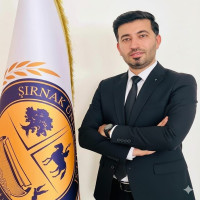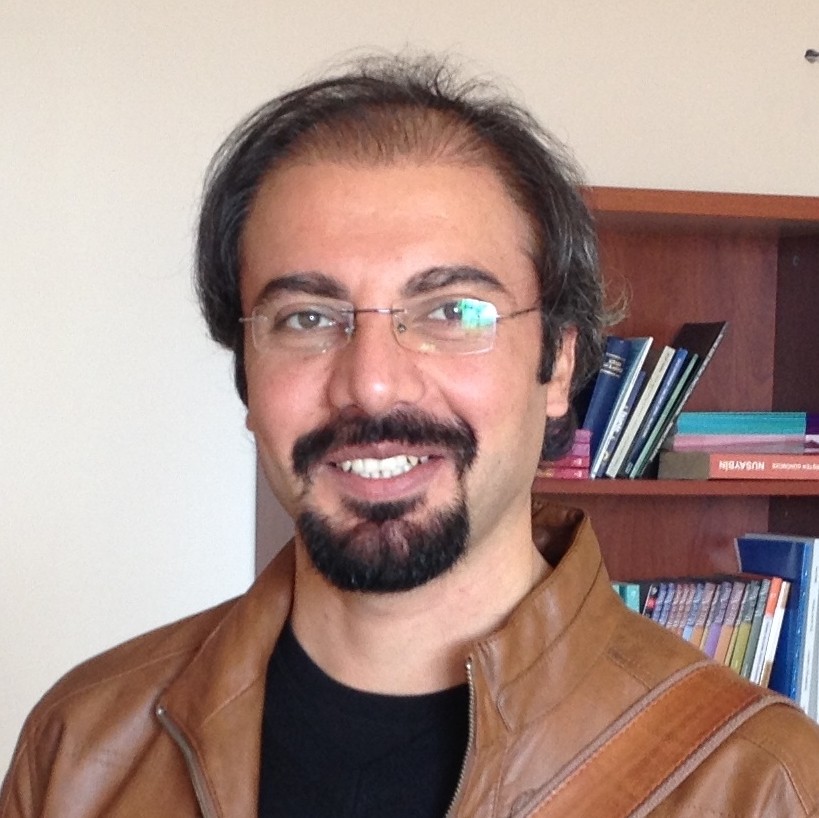Research Article
Aim & Scope
Our journal aims to bring together academic studies in the field of social sciences and humanities, especially Islamic Sciences / Theology, with its readers and thus contribute to the world of science.
The responsibility of the articles published in the journal in terms of science, law and language belongs to the authors. No fee is charged for the articles to be published in the journal and no royalties are paid to the authors.
Bitlis Islamiyat Journal, which is published within the Faculty of Islamic Sciences of Bitlis Eren University, is a refereed journal and is published twice a year. In addition to original research articles in the fields of theology, social sciences and humanities, book reviews, symposium introductions, translated articles (Turkish-English-Arabic) are also published in our journal.
Articles submitted for publication in our journal are scanned with a plagiarism programme after the preliminary evaluation stage. As the final stage, they are sent to two referees. A double blind refereeing system is applied between our referees and authors. The article that receives a positive report from two referees is published. If one of the referees gives a negative report, the article is sent to a third referee.
Our journal is published on 15 June and 15 December each year.
Author Guidelines
1. In our journal, more than one work of an author in the same period cannot be evaluated. In addition, the same author's article cannot be published for two consecutive issues.
2. The article volume should not exceed 8,000 words for Turkish articles in the application and 9,000 words in the publication (with revisions). For English articles, a limit of 12,000 words in the application and 13,000 words in the publication will be applied. For Arabic articles, it should not exceed 7,000 words. However, the final decision on this issue belongs to the Editorial Board.
3. The title should be written at the top of the text, centred, all letters capitalised, 12 pt, bolded and single-spaced.
4. The English title should be written just below the Turkish title, in 10 pt, normal and single-spaced.
5. The first name(s) of the author(s), which does not include a title, should be given immediately below the title and 6 pt below the title, justified to the right of the page, normal, surname(s) capitalised.
6. The field information of the author/authors should be given in the order of title, institution, e-mail and ORCID number, separated by commas and punctuated at the end, with an asterisk (*) to the right of the author/authors' names, at the bottom of the page, in 10 pt, single spaced, normal font, as page footer.
7. The abstract should be written under the title, justified, in bold. The abstract should be written in 10 pt, single-spaced, single-spaced and in Turkish, consisting of at least 100 and at most 200 words, expressing the content in the most appropriate way under this title. Abstract should be written one line below the ‘Keywords’, under the title Abstract, in 10 font size, single-spaced, normal. Abstract and Abstract should appear on the first page.
8. The Basic Text should be written on an A4 size (29.7x21 cm) page with all margins of 2.5 cm, in MS Word programme, Times New Roman font, 12 pt, 1.5 line spacing.
9. The first line of the paragraph structure should be set to 1.25. No spaces should be left manually to make paragraphs. Footnotes should be in Times New Roman 10 pt. The paragraph structure of footnotes should be set as 0.4 hanging. The references in the bibliography should be in Times New Roman 10 font size and the paragraph structure should be set as 1.25 hanging. Arabic phrases in the text and footnotes should be written in Traditional Arabic writing style, 12 point bold in the text and 10 point bold in the footnote. Scientific studies should be prepared according to the ISNAD Citation System (2nd Edition). https://www.isnadsistemi.org/guide/isnad2/
10. Articles that are not prepared in accordance with the spelling rules specified by the journal and the ISNAD Citation System 2nd Edition Footnoted System will be rejected DIRECTLY at the Preliminary Control Stage and will not be processed again in the same publication period.
11. Section headings are written in bold and numbered as 1., 2., 3.
1. Section Title or Main Title (First Letters Capitalised)
1.1. Sub-heading (Sentence layout, first letter upper case, the rest lower case)
1.1.1. Second level subheading (Sentence layout, first letter capitalised, the rest lower case)
1.1.1.1. Third level subheading (Sentence layout, first letter capitalised, the rest lower case)
INTRODUCTION, CONCLUSION and REFERENCES headings are not numbered.
12. Tables should be left justified in the text and their content should be written in 10 pt. Tables are numbered as Table 1, in bold, in 12 pt. font size and added to the table headings. In the titles, the first letter of the word should be capitalised and the rest should be written in sentence order. If the tables are quoted, it should be indicated just below the table, in 10 pt. and under the title (Source:). Pictures, photographs and other kinds of visuals are given immediately below the section or paragraph in which they are given in the article. Images and Figures (Picture / Image / Photograph 1.) are also numbered and titled in the same way and their sources are shown in the same way below them.
13. Articles submitted for publication are subjected to Pre-Checking, Plagiarism Scanning, Referee Evaluation and Turkish-English-Arabic Language Control. The manuscripts that pass the Preliminary Control stage are included in the evaluation process in which at least two referees take part within the framework of the principle of double blind refereeing.
ATTRIBUTION SYSTEM WITH ATTRIBUTION NOTE https://www.isnadsistemi.org/
The Isnad Citation Style https://www.isnadsistemi.org/en/
SAMPLE ARTICLE COVER PAGE
SAMPLE ARTICLE TEMPLATE
COPYRIGHT TRANSFER FORM
DECLARATION FORM STATING THAT ETHICS COMMITTEE AUTHORISATION IS NOT REQUIRED
STATEMENT OF RESEARCHERS' CONTRIBUTION RATE AND CONFLICT STATEMENT
Ethical Principles and Publication Policy
Ethical Principles and Publication Policy
The publication processes applied in Bitlis Islamiyat Journal (BİDER), published within the Faculty of Islamic Sciences of Bitlis Eren University, constitute the basis for the development and distribution of knowledge in an impartial and reputable manner. The processes applied in this direction are directly reflected in the quality of the work of the authors and the institutions supporting the authors. Peer-reviewed studies are studies that embody and support the scientific method. At this point, it is important that all stakeholders of the process (authors, readers and researchers, publishers, referees and editors) comply with the standards for ethical principles. Within the scope of Bitlis Journal of Islamiyat publication ethics, all stakeholders are expected to carry the following ethical responsibilities.
1. Author's Responsibilities
The list of references must be complete.
Plagiarism and fake data should not be included.
The same research should not be attempted to be published in more than one journal and should comply with scientific research and publication ethics.
All authors should contribute significantly to the research.
A declaration that all data in the article are real and original is required.
All authors must ensure retraction and correction of errors.
Ethical Statement: For clinical and experimental human and animal studies that require an ethics committee, the ‘name, date and number of the committee’ of the ethics committee approval should be stated in the method section of the study.
2. Responsibilities of Reviewers
Reviews should be impartial.
Reviewers should not have any conflict of interest with the research, the authors and/or the research funders.
Reviewers should indicate relevant published but not cited works.
Checked manuscripts should be kept confidential.
3. Editorial Responsibilities
Editors have full responsibility and authority to accept or reject an article.
Editors should not be in conflict of interest regarding the articles they accept or reject.
Only articles that will contribute to the field should be accepted.
When errors are found, it should support the publication or withdrawal of the correction.
Should keep the names of the referees confidential and prevent plagiarism/fake data.
Uncovering Plagiarism: Articles submitted for publication in Bitlis Islamiyat Journal are subjected to double blind peer review by at least two referees. In addition, a special plagiarism detection programme (iThenticate) is used by the editor to confirm that the articles have not been published before and do not contain plagiarism.
Publication Policy
Publisher: Bitlis Journal of Islamiyat is published by Bitlis Eren University Faculty of Islamic Sciences (Bitlis/Turkey).
Scope: Bitlis Islamiyat Journal publishes original research articles in the fields of theology, social sciences and humanities, as well as book reviews, symposium introductions, translated articles (Turkish-English-Arabic).
Publication Frequency: Bitlis Islamiyat Journal is a refereed journal published 2 issues a year (15 June - 15 December). The deadline for submission of articles for the June issue is 30 April; the deadline for submission of articles for the December issue is 31 October. Articles received after these dates will be considered for the next publication period.
Article Acceptance: The articles to be submitted to Bitlis Islamiyat Journal should not have been published or accepted for publication elsewhere. Papers previously presented at a scientific meeting may be accepted, provided that this is clearly stated. Maximum one study by the same author can be published in one issue.
Article Evaluation Process: Manuscripts submitted to our journal are first examined by the Editorial Board for compliance with the principles of the journal. Articles submitted for publication are checked for plagiarism using a special plagiarism detection programme. Those that do not comply with the Isnad 2 Citation System Writing Guide (https://www.isnadsistemi.org/guide/isnad2/) are returned to the author for correction. Those found suitable for evaluation are sent to at least two referees in the relevant field. If one of the referee reports is positive and the other is negative, the manuscript may be sent to a third referee or the Editorial Board may make a final decision after reviewing the referee reports. Authors take into account the criticisms and suggestions of the referees and the Editorial Board. If they disagree, they have the right to object with their reasons.
Citation and Reference System: Bitlis Islamiyat Journal requires the use of the Isnad 2 Citation System (https://www.isnadsistemi.org/guide/isnad2/) in citation and bibliography writing.
Plagiarism Detection Policy: It is confirmed that the articles have not been published before and do not contain plagiarism through a special programme used in plagiarism detection. If the similarity rate is above 20% as a result of the plagiarism scanning performed in the preliminary control phase, the article is returned to the author for revision. The copyright of the articles accepted for publication in Bitlis Islamiyat Journal is deemed to be transferred to the editorial office of Bitlis Islamiyat Journal.
Open Access Policy: This journal provides immediate open access to its content by adopting the principle that providing scientific research free of charge to the public will increase the global sharing of knowledge.
Price Policy
No fee is charged to the authors during the article evaluation and publication process.
Journal Boards
Editor in Chief

Assist. Editors



1992 yılında Samsun ili 19 Mayıs ilçesinde doğdu. İlk, orta ve lise öğrenimini Samsun 19 Mayıs’ta tamamladı. 2014 yılında Erzincan Binali Yıldırım Üniversitesi İlahiyat Fakültesi’nden mezun oldu. 2015 yılında Öğretim Üyesi Yetiştirme Projesi (ÖYP) kapsamında Bitlis Eren Üniversitesi İslami İlimler Fakültesi Tasavvuf Anabilim Dalı’na Araştırma Görevlisi olarak atandı. ÖYP kapsamında 6 ay süre ile Yalova Üniversitesi’nde Arapça eğitimi aldı. Van Yüzüncü Yıl Üniversitesi’nde Tasavvuf alanında Prof. Dr. Ferzende İDİZ danışmanlığında hazırlanan “Tasavvufî Düşüncede Fenâ Kavramı” adlı teziyle yüksek lisans eğitimini (2019); “Hint Alt Kıtası Sûfîlerinden Şeyh Muhammed Gavs ve Tasavvufî Görüşleri” adlı çalışmasıyla da doktora programını (2024) tamamladı. 14.02.2025 tarihinden itibaren Bitlis Eren Üniversitesi'nde Dr. Öğretim Üyesi olarak çalışmaya devam etmektedir. Evli ve bir çocuk babasıdır.

Editorial Board

 Web
Web







 Web
Web

 Web
Web
Ethics Editor
Section Editors





1991 yılında Kilis'te doğdu. 2009'da Kilis Anadolu İmam-Hatip lisesinden mezun oldu. 2016'da Çukurova Üniversitesi İlahiyat Fakültesinden mezun oldu. 2018 yılında Çukurova Üniversitesi, Sosyal Bilimler Enstitisü, Felsefe ve Din Bilimleri / Din Psikolojisi'nde "Suriyeli Mültecilerde Kültürel Uyum Sürecinin Dinî ve Psikolojik Boyutları (Kilis Örneği)" isimli çalışmasıyla Yüksek Lisans eğitimini tamamladı. 2022 yılında başladığı Çukurova Üniversitesi, Sosyal Bilimler Enstitisü, Felsefe ve Din Bilimleri / Din Psikolojisi alanında Doktora eğitimine devam etmektedir. Şubat 2020'de Bitlis Eren Üniversitesi İslami İlimler Fakültesi, Felsefe ve Din Bilimleri/Din Bilimleri Anabilimdalı'na Araştırma Görevlisi olarak atandı.

Layout Editor

Writing Editor
Foreign Language Editor


Technical Editor

1991 yılında Kilis'te doğdu. 2009'da Kilis Anadolu İmam-Hatip lisesinden mezun oldu. 2016'da Çukurova Üniversitesi İlahiyat Fakültesinden mezun oldu. 2018 yılında Çukurova Üniversitesi, Sosyal Bilimler Enstitisü, Felsefe ve Din Bilimleri / Din Psikolojisi'nde "Suriyeli Mültecilerde Kültürel Uyum Sürecinin Dinî ve Psikolojik Boyutları (Kilis Örneği)" isimli çalışmasıyla Yüksek Lisans eğitimini tamamladı. 2022 yılında başladığı Çukurova Üniversitesi, Sosyal Bilimler Enstitisü, Felsefe ve Din Bilimleri / Din Psikolojisi alanında Doktora eğitimine devam etmektedir. Şubat 2020'de Bitlis Eren Üniversitesi İslami İlimler Fakültesi, Felsefe ve Din Bilimleri/Din Bilimleri Anabilimdalı'na Araştırma Görevlisi olarak atandı.
Proofreading Editör

1992 yılında Samsun ili 19 Mayıs ilçesinde doğdu. İlk, orta ve lise öğrenimini Samsun 19 Mayıs’ta tamamladı. 2014 yılında Erzincan Binali Yıldırım Üniversitesi İlahiyat Fakültesi’nden mezun oldu. 2015 yılında Öğretim Üyesi Yetiştirme Projesi (ÖYP) kapsamında Bitlis Eren Üniversitesi İslami İlimler Fakültesi Tasavvuf Anabilim Dalı’na Araştırma Görevlisi olarak atandı. ÖYP kapsamında 6 ay süre ile Yalova Üniversitesi’nde Arapça eğitimi aldı. Van Yüzüncü Yıl Üniversitesi’nde Tasavvuf alanında Prof. Dr. Ferzende İDİZ danışmanlığında hazırlanan “Tasavvufî Düşüncede Fenâ Kavramı” adlı teziyle yüksek lisans eğitimini (2019); “Hint Alt Kıtası Sûfîlerinden Şeyh Muhammed Gavs ve Tasavvufî Görüşleri” adlı çalışmasıyla da doktora programını (2024) tamamladı. 14.02.2025 tarihinden itibaren Bitlis Eren Üniversitesi'nde Dr. Öğretim Üyesi olarak çalışmaya devam etmektedir. Evli ve bir çocuk babasıdır.
Advisory Board


1982’de Atatürk Üniversitesi İlahiyat Fakültesinden mezun oldu. 1998’de Cumhuriyet Üniversitesi SBE’de “Kur’an’da Hz. Muhammed’in Özellikleri” başlıklı teziyle yüksek lisansını, 2003’te Selçuk Üniversitesi SBE’de “İtikatta Sünnet’in Yeri” başlıklı teziyle doktorasını tamamladı. 2009 yılında Şırnak Ün. İlahiyat Fakültesi Kelam Anabilim Dalına Yrd. Doç. Dr. olarak atandı. 2012 de doçent oldu. 2016 Yılında Adıyaman Ün. İslami İlimler Fak. Kelam Anabilim Dalına Doç. Dr. olarak atandı. 2017 de Profesör oldu. Halen Adıyaman Üniversitesi İlahiyat Fakültesi Dekan Vekilliğini yürütmektedir.











